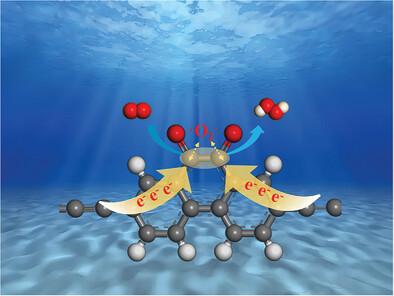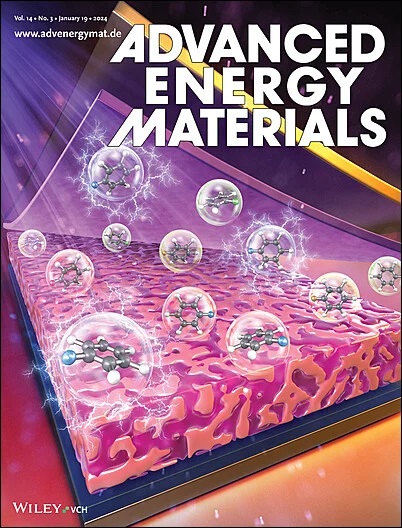Phenanthrenequinone-Modified Conjugated Polymer Enabling Photocatalytic H2O2 Generation via Efficient O2− Conversion
IF 24.4
1区 材料科学
Q1 CHEMISTRY, PHYSICAL
引用次数: 0
Abstract
The photocatalytic O2 reduction reaction offers a promising approach to synthesizing H2O2. Nevertheless, the low conversion efficiency of O2− constrains the efficiency of photocatalytic H2O2 production. This is because O2 can readily obtain electrons to generate O2−, but it is challenging to reacquire electrons after generating O2−. Accordingly, this study proposes the improvement of the conversion efficiency of O2− through the directional enrichment of photogenerated charges at sites of O2− reduction and stabilization of O2−. This study introduces a phenanthrenequinone group with adjacent carbonyl groups as the O2− reduction reaction site. The directional enrichment of photogenerated charges at the O2− reduction site enhances the probability of O2− obtaining electrons. Concurrently, the special adsorption configuration enhances the adsorption, and stabilizes·O2− on the catalyst surface, accelerating the conversion of O2− to H2O2 and achieving an H2O2 generation rate of 3400 µmol g−1 h−1. This work presents an innovative tactic regarding the efficient reduction of O2− to H2O2, which informs the structural design of advanced photocatalytic systems for the production of H2O2.

求助全文
约1分钟内获得全文
求助全文
来源期刊

Advanced Energy Materials
CHEMISTRY, PHYSICAL-ENERGY & FUELS
CiteScore
41.90
自引率
4.00%
发文量
889
审稿时长
1.4 months
期刊介绍:
Established in 2011, Advanced Energy Materials is an international, interdisciplinary, English-language journal that focuses on materials used in energy harvesting, conversion, and storage. It is regarded as a top-quality journal alongside Advanced Materials, Advanced Functional Materials, and Small.
With a 2022 Impact Factor of 27.8, Advanced Energy Materials is considered a prime source for the best energy-related research. The journal covers a wide range of topics in energy-related research, including organic and inorganic photovoltaics, batteries and supercapacitors, fuel cells, hydrogen generation and storage, thermoelectrics, water splitting and photocatalysis, solar fuels and thermosolar power, magnetocalorics, and piezoelectronics.
The readership of Advanced Energy Materials includes materials scientists, chemists, physicists, and engineers in both academia and industry. The journal is indexed in various databases and collections, such as Advanced Technologies & Aerospace Database, FIZ Karlsruhe, INSPEC (IET), Science Citation Index Expanded, Technology Collection, and Web of Science, among others.
 求助内容:
求助内容: 应助结果提醒方式:
应助结果提醒方式:


